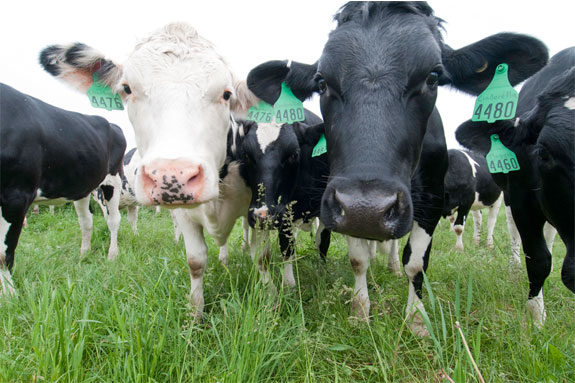Michigan State University (MSU) is poised to begin work on a new anaerobic digester, a system that will not only help re-use waste from MSU’s farms and dining halls but also will create energy for some on-campus buildings. At its April 13 meeting, the MSU Board of Trustees authorized the administration to begin work on the project, an approximately $5 million venture that should pay for itself in less than 15 years.
When it is completed, probably in the summer of 2013, the system will provide a source of renewable energy which will be used to produce electricity for some of the buildings south of the main MSU campus.It also will keep organic waste produced at the university from going to landfills.
“Once complete, this system will be the largest on a college campus in the U.S,” said Dana Kirk, a specialist from MSU’s Department of Biosystems and Agricultural Engineering who is overseeing the project.
“It will be the largest in volume and in energy output.”
Here's how it works
Manure, food waste and other organic matter are placed in the airtight tank, which will hold about 390,000 gallons of material. The tank contents are maintained at roughly 100 degrees Fahrenheit for 20 to 30 days.
The organic material is decomposed by a group of naturally occurring microorganisms found in livestock manure. The result is biogas and a slurry of partially decomposed organic matter, water and nutrients.
“Only about 20 percent of the energy we produce is being used to sustain the process,” Kirk said. “The other 80 percent is available for other uses.”
In comparison, a smaller anaerobic digester already in use at MSU for research purposes, uses pretty much all of the biogas that is produced to run the system.
MSU’s Anaerobic Digestion and Research and Education Center, established by a grant from a southwest Michigan foundation, went into operation in 2008 and is used for academic and industrial research and education.
Presently, about 21,000 tons of manure and 1,500 tons of food waste are generated every year at MSU. This system will re-use a large amount of that waste. Any material left over from the digesting process will be used as fertilizer.
In addition, food waste from local sources outside of the university also will be included in the system’s organic matter.
“Anaerobic digestion has proven to be a feasible technology to convert waste to resource while minimizing negative impact on the environment,” said Ajit Srivastava, chairperson of the Department of Biosystems and Agricultural Engineering. PD
—From Michigan State University news release
PHOTO
MSU's new anaerobic digester will be located at the Dairy Research, Teaching and Extension Center. When completed, it will re-use waste from MSU's farms and dining halls to create energy for some on-campus buildings. Photo courtesy of Michigan State University.




